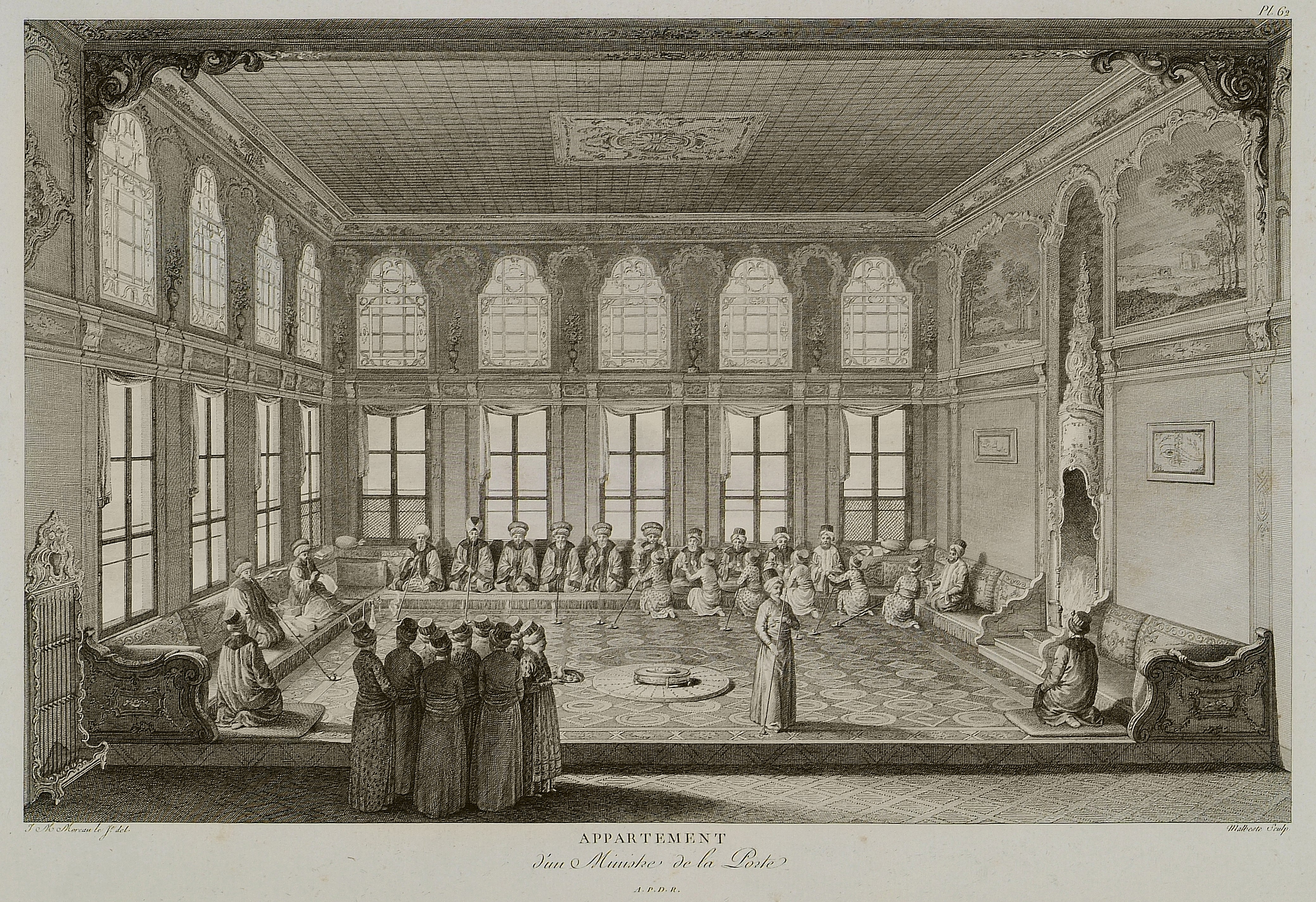Balkan and Aegean artistic identities in the eighteenth century between East and West
- Starts
- Ends
Presented By
The Gennadius Library, American School of Classical Studies at Athens
Location
Cotsen Hall, Hybrid Lecture, Anapiron Polemou 9, Kolonaki 10676Co-organized by Maria Georgopoulou (Director of the Gennadius Library) and Alper Metin (2024-2025 Cotsen Fellow), this symposium aims to shed light on the intricate artistic and cultural i dentities that flourished in the eighteenth-century Ottoman Balkans and Aegean, regions positioned at the confluence of ‘Eastern’ and ‘Western’ historiographical conventions. The event encourages scholars to engage in a comprehensive examination of artistic production, architectural development, and socio-political dynamics during this transformative period.
dentities that flourished in the eighteenth-century Ottoman Balkans and Aegean, regions positioned at the confluence of ‘Eastern’ and ‘Western’ historiographical conventions. The event encourages scholars to engage in a comprehensive examination of artistic production, architectural development, and socio-political dynamics during this transformative period.
Central to the symposium is the reassessment of the historiographical terms post-Byzantine art and Ottoman Baroque. Are these designations still relevant? If post-Byzantine art predominantly refers to religious works, how should we classify secular creations, such as the richly decorated interiors of Balkan and Anatolian mansions? How authentically Baroque was the so-called Ottoman Baroque, and does this term effectively convey the unique synthesis embodied in Ottoman architecture? Furthermore, how should we approach the non-Baroque elements within this period—features rooted in Byzantine, Western medieval, and Renaissance traditions—that complicate the conventional understanding of the Ottoman Baroque? The aim is to explore how these varied influences merged into hybrid forms that challenge conventional categorization.
The symposium will address the following themes:
I. The impact of political and cultural rivalries between the Ottomans and Venice in the Aegean and the Habsburgs in the Balkans, which not only redefined power structures but also shaped cross-cultural artistic and architectural identities. The manifestation of these rivalries in the built environment and material culture, such as building that bear testimony to shifts of power, conflict, and transformation.
II. The rich network of technical expertise of itinerant artists, architects, master builders, naval builders and artisans that fostered the exchange of knowledge and artistry. The fusion of local traditions in crafts (woodcarving, silverwork, textiles etc.) in areas such as Mount Athos and the Peloponnese. The influential interactions between the Archipelago and the coastal cities of mainland Greece and Anatolia, including Constantinople/Istanbul.
III. The interactions between Catholic, Orthodox, and Muslim communities in centers such as Crete, Chios, Constantinople/Istanbul, and Smyrna/Izmir, that shaped and transformed urban and architectural spaces.
IV. The role of Orthodox merchants, whose economic influence and cultural mediation bridged the Ottoman Empire and Western Europe, fostering significant cross-cultural exchanges.
V. The mediation of Greek communities between the Venetian and Ottoman realms. The dual status of Greeks, as subjects of Venice and the Porte, in shaping of the artistic and architectural heritage they cultivated, with its broader implications for the region’s cultural fabric.
This symposium seeks to foster an interdisciplinary dialogue among art and architectural historians as well as scholars from related fields. Together, we aim to deepen our understanding of the interplay between art, identity, and political agency in the eighteenth-century Balkans and Aegean, unveiling the rich complexity of the artistic and cultural legacy of the region.
PROGRAM

Download Program HERE
TUESDAY, 08/04/2025
16.00
Conference registration and coffee
16.15
INTRODUCTION
Maria Georgopoulou (Director of the Gennadius Library) and Alper Metin (University of Bologna & 2024-2025 Cotsen Traveling Fellow at the Gennadius Library)
16.30 – 18.00
SESSION I: MAPPING ARCHITECTURAL CONNECTIONS
Nikos Magouliotis (Institute for the History and Theory of Architecture, ETH Zurich)
The Printed Page and the Painted Column: An Architectural Microhistory of a Church in Ottoman Thessaly, ca. 1800.
Alper Metin (Department of the Arts, University of Bologna)
Warming Up to Change: Heating Appliances in the Gradual Transformation of Eighteenth-Century Ottoman Interiors.
Deniz Türker (Department of Art History, Rutgers University)
“Carvers of Chios”: Imperial Patrons, Ottoman Greek Kalfas, and Nimble Building in the Eighteenth Century.
18.00 – 18.15
Coffee break
18.15 – 20.00
SESSION II: DOMESTIC SPACES. HISTORY AND CONSERVATION
Theocharis Tsampouras (Ephorate of Antiquities of Kozani, Hellenic Ministry of Culture)
The Political Character of Eighteenth-Century Christian Orthodox Art in the Ottoman Balkans.
Amalia Gkimourtzina (Ephorate of Antiquities of Kastoria, Hellenic Ministry of Culture)
The Secular Decoration in the Eighteenth-Century Mansions of Western Macedonia, Through the Example of the Conservation Works Carried Out in Tsiatsiapa Mansion in Kastoria.
Omniya Abdel Barr (Victoria and Albert Museum, London)
Eighteenth-Century Painted Ceilings in Cairo: Bayt al-Razzaz in the Context of Ottoman Architectural Networks.
20.00
Reception
WEDNESDAY, 09/04/2025
09.30 - 11.15
SESSION III: “POST-BYZANTINE” SCULPTURE, TEXTILES, MATERIAL CULTURE
Anna Ballian (Benaki Museum, Athens)
From Art of the Empire to Art in the Empire: The Case of Ottoman and ‘Post-Byzantine’ Art.
Nikolaos Vryzidis (School of Applied Arts and Culture, University of West Attica)
Networks of Pluriversality: Trade, Diasporas and “Baroque” Textile Culture in Ottoman Greece.
Dimitrios Liakos (Ephorate of Antiquities of Chalkidike and Mount Athos, Hellenic Ministry of Culture)
Observations on Eighteenth-Century Sculpture in Mainland Greece: The Cases of Thessaly and Mount Athos.
11.15 – 11.30
Coffee break
11.30 – 12.45
SESSION IV: RELATIONS WITH ANTIQUITY Elizabeth Key Fowden (Faculty of Classics, University of Cambridge)
Pharos, Tower, Temple and Tent: Visualizing the Horologion in Eighteenth-Century Athens.
Paolo Girardelli (Department of History, Boğaziçi University)
A “Rotunda” on the Aegean Shores. The Franciscan Church of Santa Maria in Bornova (1797-1831).
Watch 1st Day